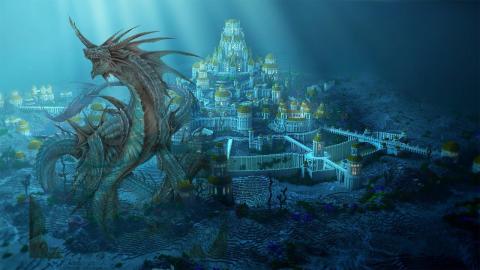Scientists Are Investigating Signs of Ancient Human Civilization Underwater

By Becky Ferreira
Archaeologists are trying to piece together the mystery of an underwater trail of ancient rock piles, or cairns, that stretch for miles under the shimmering waters of Lake Constance, a glacial lake that lies between Germany, Austria, and Switzerland, and which appear to have been made by humans who lived some 5,500 years ago, according to a 2021 study.
The huge cairns have attracted public attention and expert debate ever since they were first discovered in 2015 by the Institute for Lake Research in Langenargen. Roughly 170 of these rock formations are arranged in a line under the shallow waters of Lake Constance, several hundred feet from its southwest Swiss shore.
A team led by Urs Leuzinger, an archaeologist at the Museum of Archaeology of the Canton of Thurgau, have amassed compelling evidence that the rock formations were made by humans who lived in the area during the Neolithic period.
The piles are several dozen feet wide, with heights of up to six feet, distinguishing them as impressive structures that would have required a lot of effort and time to build, though "the function of this 10-kilometer long prehistoric feature remains enigmatic," according to a 2021 study published in the Annual Review of Swiss Archaeology. The findings of this study will be presented in a pop-up exhibit this week called "Bodensee Stonehenge" (meaning Lake Constance Stonehenge) at the Office for Archaeology Thurgau.
The cairns were made by humans "directly at the Neolithic shoreline," said Leuzinger in an email to Motherboard. "Climatic change raised the lake level to, nowadays, three to five meters higher," he added, noting that the shoreline "depends also on the seasonal fluctuation of the lake level, snow in the Alpine range."




























Comments
Imagine That!
Comment